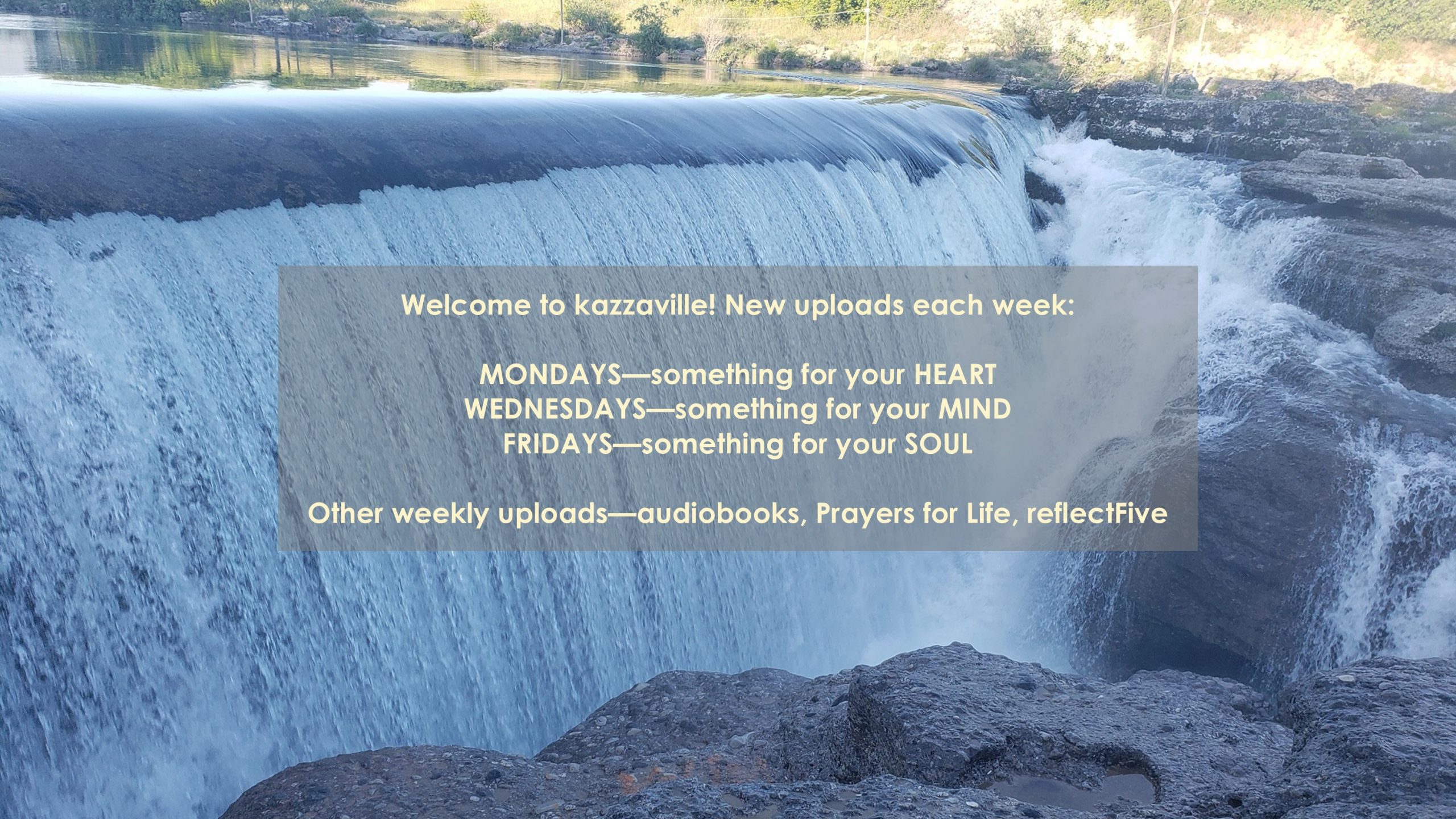The Good News Goes On

“The Good News Goes On” – July 28th, 2024 (Mark 16)
During our dating years and into the first five years of our married life, Paul and I went to our local video game parlor pretty much every week. We’ve always enjoyed competing with one another and with arcade machine high scorers, whether playing racing games, space invaders, or pinball. I remember my feeling of elation during a visit to another city when we first played a video game with alternative endings based on choices we made. Mind blown! I must have played that game dozens of times on that first day, intentionally trying to discover previously undiscovered possibilities.
Today we’re going to look at how “The Good News Goes On.” Just like that video game with alternative endings, only infinitely better, the ending of the Gospel of Mark is chock full of possibilities, because this isn’t just any old news, it’s the Good News of Jesus Christ! And the Good News of Jesus Christ is not like news you read in a newspaper as a passive bystander. We are invited into the good news as active participants with Jesus, by the power of the Holy Spirit. As followers of Jesus who proclaim and demonstrate the good news of Jesus Christ, we become part of the good news!
So here we are in the final chapter of the Gospel of Mark, Mark chapter 16. But we’re not going to find a predictable or neat conclusion. Please turn to Mark 16 in your Bible or on your Bible app. Whether you’ve noticed this before or not, I want to draw our attention to what is written about a third of the way through this chapter – you will see some kind of note or notation from the editors. Here are some key things to note:
- The two oldest manuscripts of Mark 16 (from the 300s) conclude with verse 8.
- Mark 16 has what is known as the “Shorter Ending” or “lost ending,” which appear together in six Greek manuscripts, and in dozens of Ethiopic copies.
- Mark 16 has what is known as the “Longer Ending” which we see in many English translations as verses 9–20, with editors either placing these verses in brackets or otherwise formatting them to show that they were not part of the original text.
Some might say the shorter and longer endings exist because of additions made by scribes who were uncomfortable with an inconclusive ending and added extra material to provide a happier ending. The Bible Project concludes that neither of these additional endings are likely because “scribal additions of this proportion are extremely rare and can easily be discerned from comparison with earlier manuscripts.” It goes on to say that “it’s possible that the original ending got lost or Mark never actually finished his account, but it’s more likely that the abrupt ending with the terrified women is intentional.”
Today we are focusing not on the alternative endings of the text of the gospel of Mark, but on the infinitely better alternative endings involving you and me, as we respond to Jesus’ invitation to become part of the Good News of Jesus Christ, which is what happens as we continue to proclaim and demonstrate the good news of the kingdom of God. Let’s look at three important ways in which the good news goes on.
The first way is that the good news goes on, through everyone.
Mark 16:1-3 (NRSV) – “1 When the sabbath was over, Mary Magdalene, and Mary the mother of James, and Salome bought spices, so that they might go and anoint him. 2 And very early on the first day of the week, when the sun had risen, they went to the tomb. 3 They had been saying to one another, ‘Who will roll away the stone for us from the entrance to the tomb?’”
As we talked about when we looked at Mark chapter 8, before Jesus came, welcome and invitation to God’s temple or to a table of fellowship was exclusive and reserved for the select few. Gentiles, slaves, and females were all explicitly excluded. Jesus ushered in a new social order in the kingdom of God, such that now “there is no longer Jew or Greek, there is no longer slave or free, there is no longer male and female; for all of you are one in Christ Jesus” (Galatians 3:28). Mark writes his gospel intentionally in order to convince readers then and now that Jesus’ kingdom project of reconciliation brings all people together into one indivisible humanity. Jesus came to break down all barriers. There is no “us” and “them” in the kingdom of God. It’s no mistake that Mark concludes his gospel by drawing our attention to the actions of three individuals who had no rights and no legal recourse because of their low status in this honor-shame culture. In that culture, the testimonies of women like Mary, Mary, and Salome, were inadmissible in Rabbinical courts. Roman law prohibited women like Mary, Mary, and Salome from representing the interests of others. The final chapter in the Gospel of Mark mentions just three beautiful bearers of God’s image – Mary, Mary, and Salome (plus “a young man, dressed in a white robe” [an angel, as the gospel of Matthew tells us] who points these precious ones to the resurrected Jesus).
Everyone is invited to give their allegiance to Christ as king. Everyone is invited to follow Jesus through both professed and practical obedience. Everyone is invited, everyone is welcome, everyone is included. The good news of Jesus Christ goes on, through everyone!
The second way is that the good news goes on, in the entirety of our emotions.
Last month I went with a sweet group of family and friends to the movie theater to see Inside Out 2, the long-awaited sequel to one of my favorite animations of all time, Pixar’s 2015 film Inside Out. Without giving away any spoilers, the main characters in the first film are personified basic emotions: Joy, Anger, Fear, Disgust, and Sadness. Each of these emotions influence the actions of the character to whom they belong. The second film introduces us to four new emotions: Anxiety, Envy, Embarrassment, and Ennui. These films do a masterful job of helping us to better understand a few of the myriad of named or unnamed emotions that we each experience in our lives. If you haven’t already watched these films, I encourage you to do so with an open heart and mind, and take the time to let yourself engage a little deeper with each of these important God-designed emotions.
Wherever we consider ourselves on the “emotional” scale, we all have a lot to learn when it comes to feeling our feelings authentically and dealing with them in healthy ways. Dr. Shahram Heshmat, an associate professor of health economics at the University of Illinois who specializes in addictions and obesity, says that “the inability to deal with distresses can lead to feelings of helplessness and powerlessness. Lacking the ability to cope, some will erect powerful defenses in a desperate effort to avoid feeling pain. The person using a defense is generally trying to achieve emotion regulation and maintain their self-esteem.” He names four common and harmful defense mechanisms: projection, dissociation, self-medication, and denial. Negative emotions are a basic part of life, and the struggle is real for all of us in learning how to deal with them in helpful ways.
Psychological growth requires self-acceptance, something we already know from the second part of Jesus’ Great Commandment: “Love others as well as you love yourself” (Mark 12:31). Romans 15:7 (NRSV) urges us to “welcome one another, therefore, just as Christ has welcomed you, for the glory of God.” Other translations render that “accept each other.” Just as we are better able to love others as we better love ourselves, we are better able to welcome and accept others as we better welcome and accept ourselves! All of us!
Learning to live authentically with ourselves with our emotions is part of what it means to live in the shalom of God, the place of wholeness, flourishing, and delight. We are invited and welcomed and encouraged to bring our whole selves to God. In the kingdom of God, nothing is wasted. Rest assured, dear sisters and brothers – God is making all things new! Our job is to participate with God in the restoration and transformation of all things, as in Romans 12:2 (NRSV) – “Be transformed by the renewing of your minds, so that you may discern what is the will of God.” The Greek word translated “the will of God” speaks of an active choice, a determination, and includes God’s desire, God’s pleasure, and God’s will. Renewing our minds is not about getting rid of negative emotions. It’s about bringing our whole selves to God and participating with God in welcoming and accepting ourselves as we do small things with great love, loving God with everything we’ve got and loving others as well as we love ourselves.
Having said all that, we’re about to encounter four emotions in Mark 16:4-8. I invite you to listen carefully for each one, before we take a deeper look at them in the original Greek text – “4 When they looked up, they saw that the stone, which was very large, had already been rolled back. 5 As they entered the tomb, they saw a young man, dressed in a white robe, sitting on the right side; and they were alarmed. 6 But he said to them, ‘Do not be alarmed; you are looking for Jesus of Nazareth, who was crucified. He has been raised; he is not here. Look, there is the place they laid him. 7 But go, tell his disciples and Peter that he is going ahead of you to Galilee; there you will see him, just as he told you.’ 8 So they went out and fled from the tomb, for terror and amazement had seized them; and they said nothing to anyone, for they were afraid.”
The first emotion we encounter in Mark 16 is “alarmed” (v. 5, 6). This comes from the Greek word ekthambeó which speaks of being out of one’s senses with the outcome of being amazed to the level of wonder; being thoroughly amazed or astounded; being utterly astonished.
The second emotion we encounter in this chapter is “terror” (v. 8). This comes from the Greek tromos which speaks of trembling, quaking; shaking caused by great fear; describing the anxiety of one who distrusts their ability completely to meet all requirements, but religiously does their utmost to fulfil their duty.
The third emotion we encounter is “amazement” (v. 8). This comes from the Greek ekstasis which speaks of a displacement of the mind; bewilderment; being taken out of a regular standing position and brought into a state of ecstasy or rapture; having a state of mind that reaches far beyond the powers of ordinary perception; being one who, due to either the importance or the novelty of an event, is thrown into a state of blended fear and wonder.
The fourth and final emotion we encounter is “afraid” (v. 8). This comes from the Greek phobeó which speaks of being put to flight; terrified; frightened; withdrawing or fleeing from; being absolutely struck with fear; being seized with alarm; fearing harm or injury.
The original text is so much richer than these four simple words in English convey – there’s a lot of emotion in these few verses! These three individuals experienced the good news on that day in the entirety of their emotions. We are each invited to experience the good news that goes on today in the entirety of our emotions. We might need to do an inventory inside of ourselves and consider which emotions make us uncomfortable in ourselves or in others. I feel pretty confident that we all have our favorite emotions with whom we enjoy hanging out. And then we have other emotions that we don’t even want to dignify by naming and that we’d prefer to keep locked away out of sight and out of mind. God’s invitation to us is to welcome all of our emotions to the party. Let’s remember that every emotion we experience is part of God’s good creation. It’s not the emotions themselves that are harmful; it’s our responses to our emotions that can be helpful or harmful to our ability to live in the shalom of God, the place of wholeness, flourishing, and delight. The choices we make concerning our emotions, whether we like it or not, influence the thoughts we think, the words we speak, and the actions we take. The good news of Jesus Christ goes on, in the entirety of our emotions.
The third way is that the good news goes on, from the empty tomb to the ends of the earth.
Do you remember how the Gospel of Mark started off? Mark 1:1 – “The beginning of the good news of Jesus Christ, the Son of God.” Now we’re at the end of the gospel of Mark, which seemed to have just ended with Jesus’ death and resurrection, is actually beginning again! Let’s read Mark 16:7-8, the last two verses of Mark’s gospel, again: “‘Go, tell his disciples and Peter that he is going ahead of you to Galilee; there you will see him, just as he told you.’ So they went out and fled from the tomb, for terror and amazement had seized them; and they said nothing to anyone, for they were afraid.”
Jesus of Nazareth, the Christ, the Messiah, has come, but not like anyone had expected. All through the Gospel of Mark, everybody has struggled to grasp who Jesus is! Some had hoped that David’s kingdom would be restored. That didn’t happen. Others had hoped that Jesus would usher in a triumphal victory for the community. That didn’t happen. What did happen is that Jesus’ mission continued as it had from the beginning, when Jesus had called Peter and the disciples, taught them, and sent them out on mission. Now, Jesus is telling the disciples and Peter to go. Jesus is going ahead of them. They are promised that they will see Jesus.
Mark has intentionally left things open-ended and unresolved. Stories with neat closures are finished, with no room for us to enter the story. Resolved stories have no alternative endings. Tailored stories with happily-ever-after endings make for great popcorn movies. But this is not that kind of closed, resolved, or tailored story. All through Mark’s gospel, we are invited into the story.
Another thing about this good news story that we are invited into is that this story compels us to go beyond. A beloved character from C. S. Lewis’s Chronicles of Narnia, when speaking of the Christ-figure Aslan, asks “Safe? Who said anything about safe? ‘Course he isn’t safe. But he’s good. He’s the King, I tell you!” Just like Mr. Beaver and the early disciples, we want the good news to be like a tame lion, one that will stay calm behind a fence in our neighborhood. But the gospel, the good news of Jesus, is not to be domesticated like one of our beloved dogs or cats. One of the reasons we love our pets is that they comfort us without confronting us, they are unconcerned with our sins, they forget our frailties. But Jesus said that his disciples were to take the good news not just to their own neighborhood, but to places where they would feel uncomfortable, to people who would not all put out a welcome mat. Jesus is still calling disciples to follow him. Jesus is still sending disciples to go. Jesus is still giving disciples eyes to see him going before them. Mark calls us to go beyond to show and tell the good news of Jesus wherever we are. The good news of Jesus Christ goes on, from the empty tomb to the ends of the earth!
Matthew, Mark, Luke, John – which is your favorite gospel? It seems to me that Christians have a habit of preferring one of the four gospels over the others. And even though it’s the earliest written gospel, many Christians simply do not like Mark’s story of Jesus. It paints a very unflattering picture of the early disciples. Its fast pace comes across as harsh and demanding at times. But maybe the worst thing about it for a lot of people is the ending: “So they went out and fled from the tomb, for terror and amazement had seized them; and they said nothing to anyone, for they were afraid.” Australian Professor of Screen Studies, Richard Maltby, says that the reason that Hollywood movies have happy endings is because “the re-establishment of order renders the viewer’s experimentation with expressive behavior a matter of no consequence, contained within the safe, unexplored, unconsidered and trivialized space of entertainment.” Certainly, the Gospel of Mark cannot be accused of having a happy ending where everything is resolved!
Mark does make sure that we know that Jesus has been raised from the dead. And Mark keeps the story wide open because the story continues, the journey goes on, there is more to come! We are invited to participate, and as we do so, we participate in God’s restoration project. We are invited to become part of the good news. How would our lives change if we welcomed the Gospel of Mark’s abrupt ending as an invitation to become part of the Good News of Jesus Christ? The Good News goes on, through everyone, in the entirety of our emotions, and from the empty tomb to the ends of the earth.




